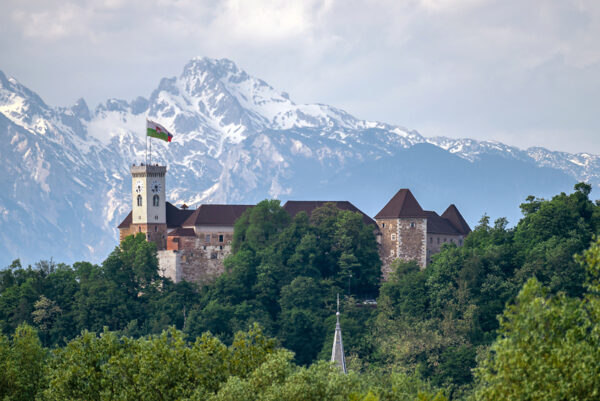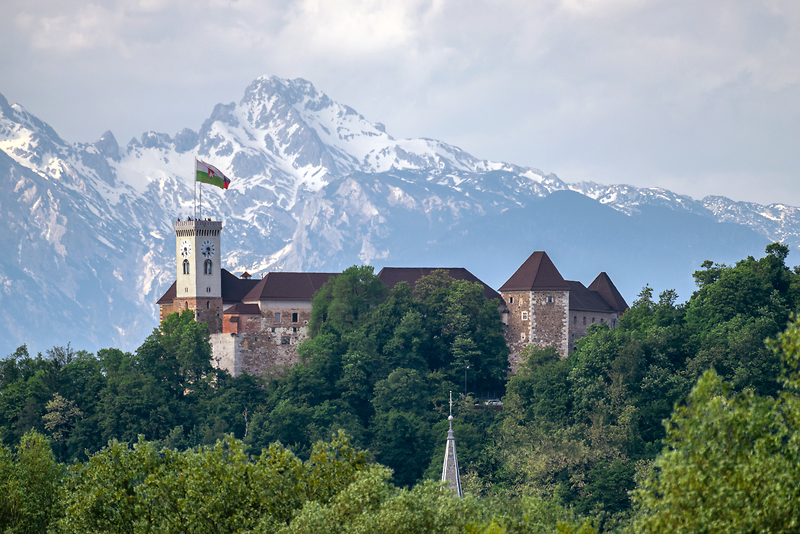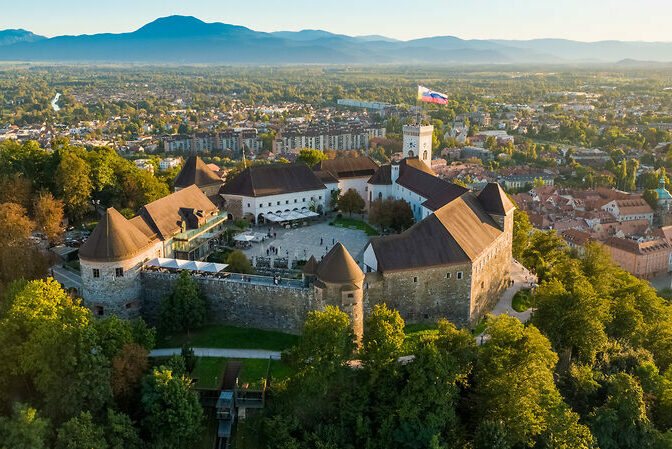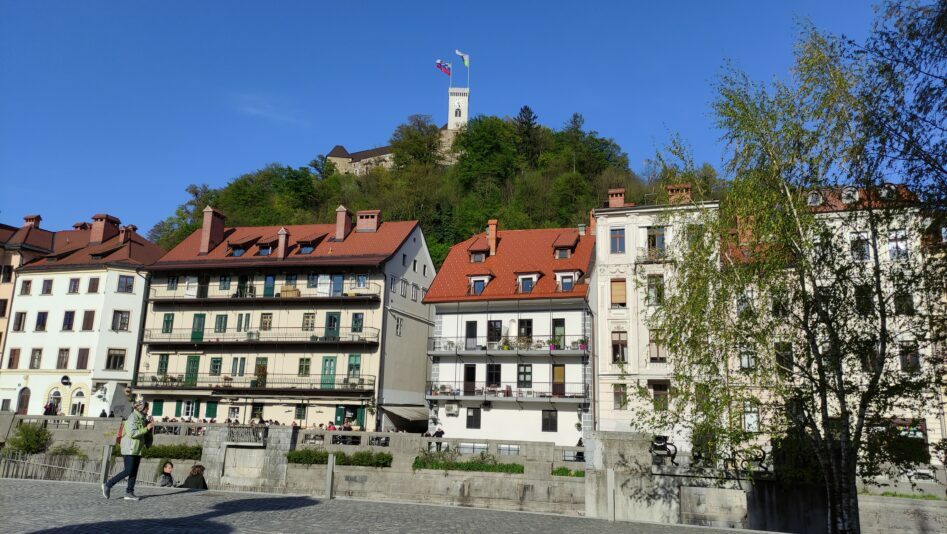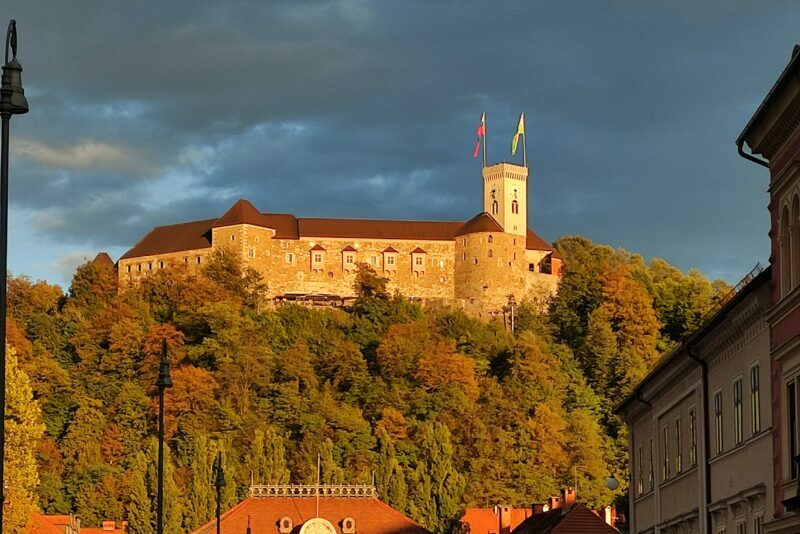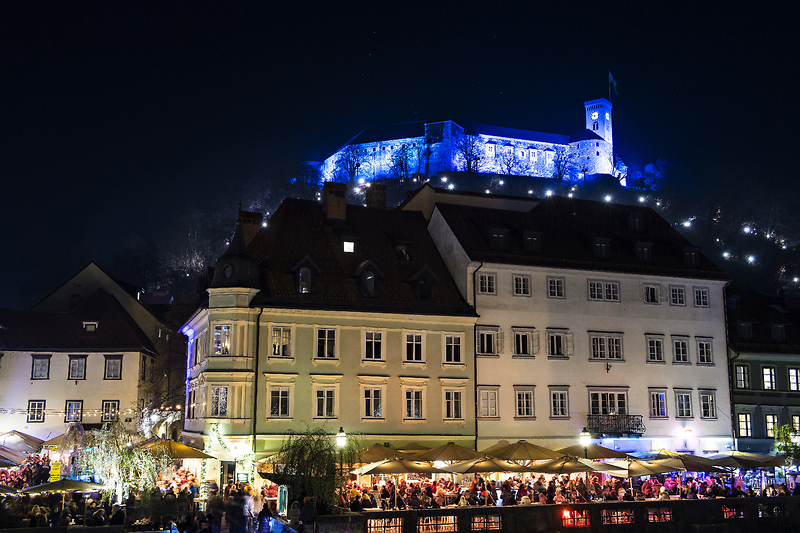With around 1.5 million visitors a year, Ljubljana Castle is certainly the most visited attraction in Ljubljana. You can go to the castle on foot along one of the many paths, take the funicular, ride the Urban train or ride a bike. No matter how you get to the castle, it will surely charm you with its grandeur and picturesque view of Ljubljana.
Although the area of the castle hill was already inhabited during the Bronze Age, the first mention of the Ljubljana Castle dates back to the reign of the Speinheim family between 1112 and 1125. At that time, the castle had the form of a fortress. After the end of the reign of the Speinheim family, the castle passed into the possession of the Czech king Otokar II. Přemysl and then in 1355 into the possession of the Habsburgs.
With the beginning of the Turkish invasions, which began in Ljubljana in 1415, Ljubljana gradually got city walls. As a result, there is a need to fortify Ljubljana Castle. Thus, during the time of the Austrian emperor Frederick III. Habsburg (emperor 1452–93) changed the appearance of the castle. The new fort was adapted for firearms, the entire castle complex was expanded and a pentagonal tower was built, which connected the exterior with a drawbridge over the defensive moat.
One of the oldest surviving parts of the castle from the 15th century is the chapel of St. George, consecrated in 1489. In 1496, the duke’s tower of Padav (today’s Šance) was built, which in the second half of the 16th century was connected to the walls to form a single castle fortification. In 1511, a catastrophic earthquake hit the entire county, but the new castle complex was not affected.
Apart from the perimeter walls, the castle chapel, the corner towers, the other castle buildings were built in the 16th and 17th centuries.
Residential sections for the provincial governor were strung along the walls; the courtyard was used to assemble the provincial noble army. The construction activity was led by provincial governors, themselves historically well-known and famous names: Lenkovič, Lamberg, Auersperg, Kacijaner, Thurn…
In the middle of the 17th century, the castle lost its role as a fortress and residence, and this was the beginning of its slow decline. Because it housed a military warehouse, the castle threatened the inhabitants and the city below instead of protecting it. With every storm, the city was in great danger of being struck by lightning in one of the powder towers.
At the end of the 18th century, between 1793 and 1796, the Viennese administration thought it would be best to demolish it. These plans were abandoned by the arrival of the French in the spring of 1797, when the French army occupied the city of Ljubljana for the first time. During the period of Napoleon’s Illyrian Provinces (1809 – 13), the castle housed barracks and a military hospital.
Until 1814, the castle housed a military post and then a provincial prison. In 1848, they built the Lookout Tower, which housed a guard who used cannon shots to warn of fires or important visits and events in the city. Previously, city servants in the Whistle Tower performed this work.
In 1905 (during the majorship of Ivan Hribar), the castle was bought by the city municipality. It was intended for cultural institutions, but due to the housing crisis, it was partially converted into flats. Between 1915 and 1918, the castle was a quarantine station for Italian prisoners of war. During the Second World War, the castle first housed Italian prisons, and after the capitulation of Italy, German prisons.
The most famous plan for the renovation of Ljubljana Castle is the plan of the architect Jože Plečnik, but it never came to life. Complete renovation began after 1963, when the last residents got apartments in the city.
You can learn more about the history of the castle by visiting the castle and attending a guided or virtual tour. You will also be able to visit one of the top restaurants at the castle. You can choose between the Gostilna na gradu with traditional Slovenian food and the restaurant Strelec, which was awarded a Michelin star in 2022.
In addition to the aforementioned, the castle also hosts a doll museum, a cafe, and a shop, where you will meet the castle rat Friderik.
